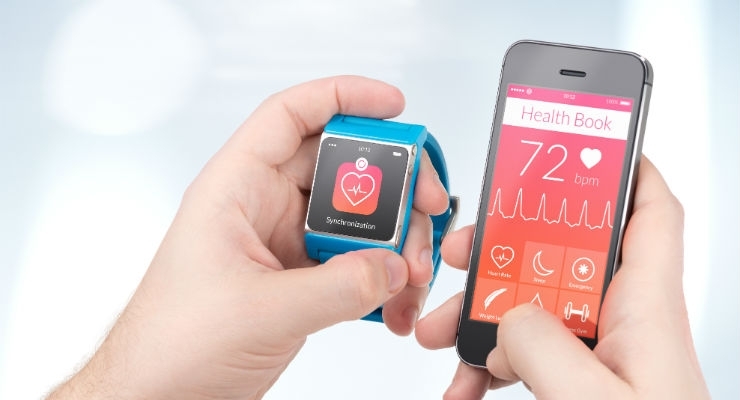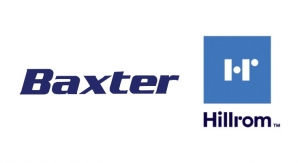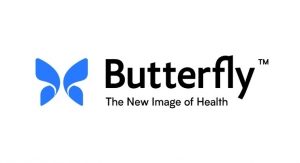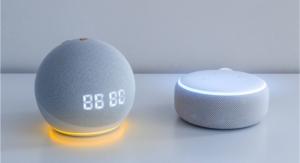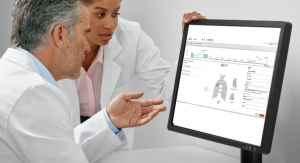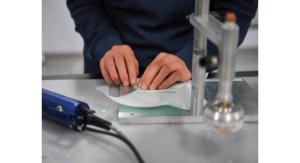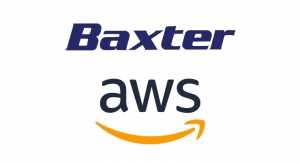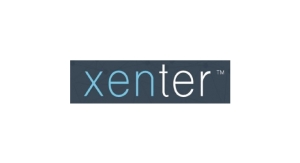Sam Brusco, Associate Editor10.11.17
Diabetes is very treatable, but managing it often feels like a full-time job. So many factors affect blood glucose levels that it can seem impossible to track them all. Strict diet and exercise regimens are key to keeping glycemic levels in check, in addition to regular insulin doses for some patients. Some patients have to test their blood glucose multiple times daily. But without a regimen in place, patients are at risk for a whole host of comorbidities. So how do diabetic patients contend with all this?
Livongo Health, which offers a blood glucose monitor with a companion service designed to coach diabetic patients, is one tool that provides guidance. The company’s cellular-connected monitor takes blood sugar readings and transmits the information to its health monitoring services. If the reading is outside of normal range, that person is flagged and recommended to drink some fruit juice or take a walk to bring blood glucose back to normal levels. If too far from the normal range, it alerts a specialist.
Issuing patients “reminders” about managing their disease and alerting a specialist when necessary are just a few of the benefits of using a mobile health (mHealth) tool to proactively manage a chronic illness. mHealth technologies can also save healthcare costs by preventing an unnecessary trip to the emergency room by detecting an inconsistency early. They could also replace a lengthy clinic visit to adjust a treatment, because mHealth platforms typically collect—and sometimes analyze—patient data to determine if a treatment is working.

Michael Lynch, managing consultant of Intertek.
MPO’s October feature story “I’ll Take My Healthcare ‘To Go,’ Please” explored the trends and technological advances driving the mobile health market as well as some of the latest mHealth platforms available to patients. Michael Lynch and Chris Wyman, respectively managing consultant and national medical executive of Intertek, a total quality assurance provider to industries worldwide, were among the industry experts interviewed for the article. Their complete input is included in the Q&A below.
Sam Brusco: What trends are you noticing in mobile health (mHealth) management?
Michael Lynch: Devices are being linked to smartphones or another means of wireless communication so data can

Chris Wyman, national medical executive of Intertek.
migrate from the device to the cloud or the manufacturer’s server. The majority of manufacturers are collecting data, but are not using it to affect the function of the device at this time. Some manufacturers are starting to implement diagnostic or therapeutic algorithms where the data is collected and trended with an output to the patient or caregiver, which may include recommendations for changes in therapy. An example is a blood glucose meter that trends glucose levels and recommends optimum doses of insulin based on the trend, rather than the current level.
The use of apps on smartphones to create diagnostic or therapeutic medical devices is on the rise. In some cases, manufacturers maintain claims of wellness and avoid the regulatory requirements of a medical device. In other cases, the manufacturers are creating tools that can be used in remote locations to make telemedicine available to a broader constituency. An example would be an app where the camera is used to take a picture of a mole or other skin condition, and the information is transmitted to a consulting physician for a diagnosis. Taking this a step further, the image could be uploaded to a database where other factors such as age, genotype, etc. can be used for an automated diagnosis.
Chris Wyman: Sensor and wearable technology is advancing in continuous glucose monitoring (CGM) devices, allowing diabetes patients to monitor blood sugar levels in real-time applications without lancet-pricks to the fingers. This technology allows diabetes patients minute-to-minute data insight for medication, diet, and exercise while drastically improving lifestyle. The future of this technology will be extending the disposable wearable sensors applied to the skin from days to months.
Therapeutic applications are improving consumer health through monitoring disease, diet, ovulation, breathing, sleep, and stress. What are your daily patterns for food intake, exercise, and sleep? Applications will alert you to eat cleaner, increase fitness, and track the hours of resting periods.
Brusco: In what ways does the use of a mobile digital health tool ease the burden on patients managing their illness? How does it ease the burden on healthcare professionals/caregivers?
Lynch: Mobile digital health tools may enable real-time monitoring of conditions that could otherwise result in acute conditions if left untreated. People have a difficult time performing self-assessment. Physiologic change may occur slowly and symptoms may be ignored. Feedback to the patient can improve compliance with preventive activities. Management of diabetes is an area where mobile health tools will reduce the number acute episodes, as well as increase the overall longevity and health of those afflicted.
Caregivers and healthcare systems will be able to monitor patients without face-to-face visits. This may allow the system to provide care to more people at a lower cost. The data that comes in from a cross-section of patients will also enable the development of more effective therapeutic models.
Brusco: Which illnesses in particular are made less burdensome to manage using an mHealth tool, and in what ways does the tool lessen that burden?
Lynch: Management of diabetes will be less burdensome for the patient, physician, and healthcare system due to the use of mobile health technologies. For the patient, integration of blood glucose data with physiologic data (blood pressure) and lifestyle data (how far did you walk? what did you eat?) can provide a better therapeutic regimen for insulin dosage. There will be less risk of over- or under-dosing, resulting in fewer side effects and more effective treatment of the condition.
Wyman: Cardiac arrhythmia management can happen through implantable cardiac monitors accompanied with smartphone applications. The devices and applications lessen the burden for clinicians with continuous patient transmissions, condition status, automatic patient notifications, and complete remote telehealth without live visits. The technology allows patients to live a less burdensome life without bedside monitoring, confirm data transmissions to the doctor, and issue patient-triggered symptoms to the clinic without a visit. The process is most cost-effective and improves patient lifestyle with less intrusive devices—all without clinic/doctor follow-up.
Brusco: What innovative technologies are making mobile health solutions possible?
Lynch: Proliferation of smart devices puts communication capabilities in many people’s hands. Bluetooth and wireless functions in smaller and smaller packages allow communication between very small medical devices and a smartphone.
Brusco: What are some of the software advances fueling innovative mHealth technologies?
Lynch: The use of AI tools is revolutionizing mobile health and healthcare in general. Analyzing all the data that is collected and finding patterns or trends not immediately obvious will allow improvements in clinical outcomes, because the best therapy for that particular person or demographic can be applied. IBM has demonstrated this concept with Watson Health in several clinical areas.
Wyman: Predictive care for disease through cognitive applications. Also, real-time data monitoring body patterns warning you hours in advance for treatment prior to a life-threatening attack.
Brusco: What’s the future of mHealth tools?
Lynch: More data collection and analysis empowered by smart devices communicating with smartphones. Dynamically adjusted, patient-specific therapies enabled by data and trending analytics.
Wyman: I predict the Medical Internet of Things (MIoT) revolution of devices connecting to the ecosystem of home, city, and industry. Devices will communicate through smart actuators, sensors, and applications. Heat maps of populations will track vitals, using cognitive applications to notify, warn, and improve consumer health and patient outcomes while extending lifespan longevity and expectancy. The critical component of this technology’s continued evolution hinges on the protection of patient data and network cybersecurity.
Livongo Health, which offers a blood glucose monitor with a companion service designed to coach diabetic patients, is one tool that provides guidance. The company’s cellular-connected monitor takes blood sugar readings and transmits the information to its health monitoring services. If the reading is outside of normal range, that person is flagged and recommended to drink some fruit juice or take a walk to bring blood glucose back to normal levels. If too far from the normal range, it alerts a specialist.
Issuing patients “reminders” about managing their disease and alerting a specialist when necessary are just a few of the benefits of using a mobile health (mHealth) tool to proactively manage a chronic illness. mHealth technologies can also save healthcare costs by preventing an unnecessary trip to the emergency room by detecting an inconsistency early. They could also replace a lengthy clinic visit to adjust a treatment, because mHealth platforms typically collect—and sometimes analyze—patient data to determine if a treatment is working.

Michael Lynch, managing consultant of Intertek.
Sam Brusco: What trends are you noticing in mobile health (mHealth) management?
Michael Lynch: Devices are being linked to smartphones or another means of wireless communication so data can

Chris Wyman, national medical executive of Intertek.
The use of apps on smartphones to create diagnostic or therapeutic medical devices is on the rise. In some cases, manufacturers maintain claims of wellness and avoid the regulatory requirements of a medical device. In other cases, the manufacturers are creating tools that can be used in remote locations to make telemedicine available to a broader constituency. An example would be an app where the camera is used to take a picture of a mole or other skin condition, and the information is transmitted to a consulting physician for a diagnosis. Taking this a step further, the image could be uploaded to a database where other factors such as age, genotype, etc. can be used for an automated diagnosis.
Chris Wyman: Sensor and wearable technology is advancing in continuous glucose monitoring (CGM) devices, allowing diabetes patients to monitor blood sugar levels in real-time applications without lancet-pricks to the fingers. This technology allows diabetes patients minute-to-minute data insight for medication, diet, and exercise while drastically improving lifestyle. The future of this technology will be extending the disposable wearable sensors applied to the skin from days to months.
Therapeutic applications are improving consumer health through monitoring disease, diet, ovulation, breathing, sleep, and stress. What are your daily patterns for food intake, exercise, and sleep? Applications will alert you to eat cleaner, increase fitness, and track the hours of resting periods.
Brusco: In what ways does the use of a mobile digital health tool ease the burden on patients managing their illness? How does it ease the burden on healthcare professionals/caregivers?
Lynch: Mobile digital health tools may enable real-time monitoring of conditions that could otherwise result in acute conditions if left untreated. People have a difficult time performing self-assessment. Physiologic change may occur slowly and symptoms may be ignored. Feedback to the patient can improve compliance with preventive activities. Management of diabetes is an area where mobile health tools will reduce the number acute episodes, as well as increase the overall longevity and health of those afflicted.
Caregivers and healthcare systems will be able to monitor patients without face-to-face visits. This may allow the system to provide care to more people at a lower cost. The data that comes in from a cross-section of patients will also enable the development of more effective therapeutic models.
Brusco: Which illnesses in particular are made less burdensome to manage using an mHealth tool, and in what ways does the tool lessen that burden?
Lynch: Management of diabetes will be less burdensome for the patient, physician, and healthcare system due to the use of mobile health technologies. For the patient, integration of blood glucose data with physiologic data (blood pressure) and lifestyle data (how far did you walk? what did you eat?) can provide a better therapeutic regimen for insulin dosage. There will be less risk of over- or under-dosing, resulting in fewer side effects and more effective treatment of the condition.
Wyman: Cardiac arrhythmia management can happen through implantable cardiac monitors accompanied with smartphone applications. The devices and applications lessen the burden for clinicians with continuous patient transmissions, condition status, automatic patient notifications, and complete remote telehealth without live visits. The technology allows patients to live a less burdensome life without bedside monitoring, confirm data transmissions to the doctor, and issue patient-triggered symptoms to the clinic without a visit. The process is most cost-effective and improves patient lifestyle with less intrusive devices—all without clinic/doctor follow-up.
Brusco: What innovative technologies are making mobile health solutions possible?
Lynch: Proliferation of smart devices puts communication capabilities in many people’s hands. Bluetooth and wireless functions in smaller and smaller packages allow communication between very small medical devices and a smartphone.
Brusco: What are some of the software advances fueling innovative mHealth technologies?
Lynch: The use of AI tools is revolutionizing mobile health and healthcare in general. Analyzing all the data that is collected and finding patterns or trends not immediately obvious will allow improvements in clinical outcomes, because the best therapy for that particular person or demographic can be applied. IBM has demonstrated this concept with Watson Health in several clinical areas.
Wyman: Predictive care for disease through cognitive applications. Also, real-time data monitoring body patterns warning you hours in advance for treatment prior to a life-threatening attack.
Brusco: What’s the future of mHealth tools?
Lynch: More data collection and analysis empowered by smart devices communicating with smartphones. Dynamically adjusted, patient-specific therapies enabled by data and trending analytics.
Wyman: I predict the Medical Internet of Things (MIoT) revolution of devices connecting to the ecosystem of home, city, and industry. Devices will communicate through smart actuators, sensors, and applications. Heat maps of populations will track vitals, using cognitive applications to notify, warn, and improve consumer health and patient outcomes while extending lifespan longevity and expectancy. The critical component of this technology’s continued evolution hinges on the protection of patient data and network cybersecurity.

